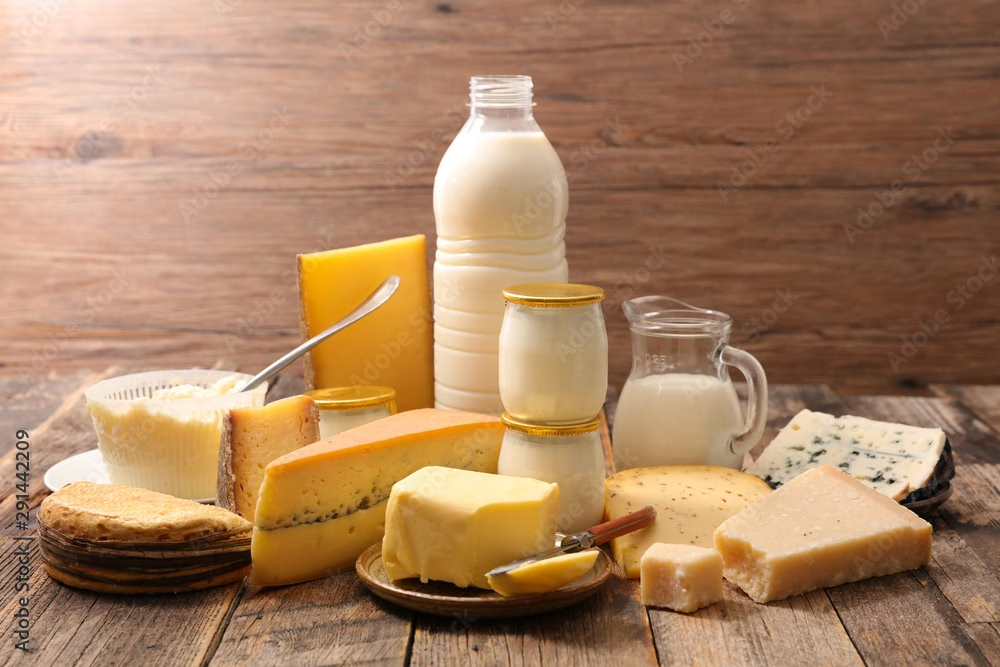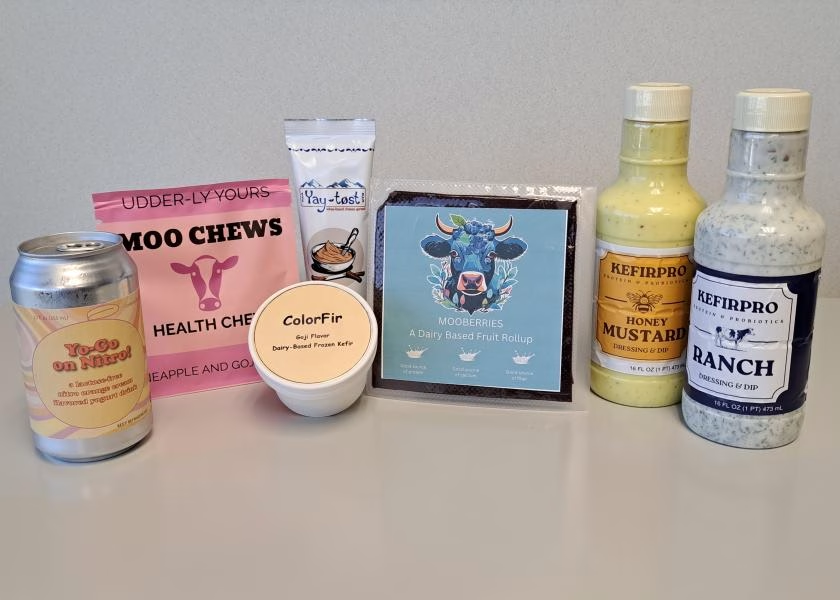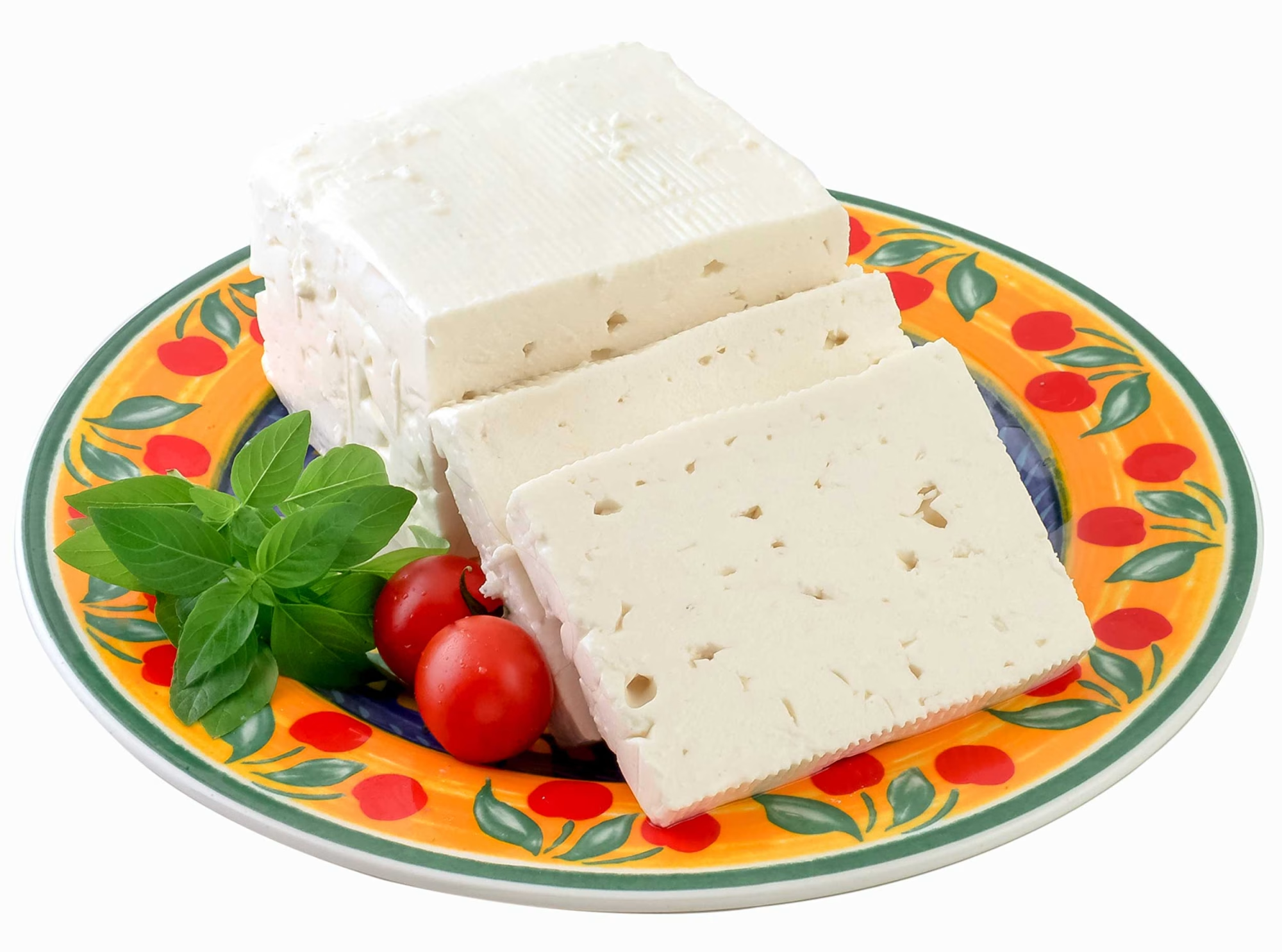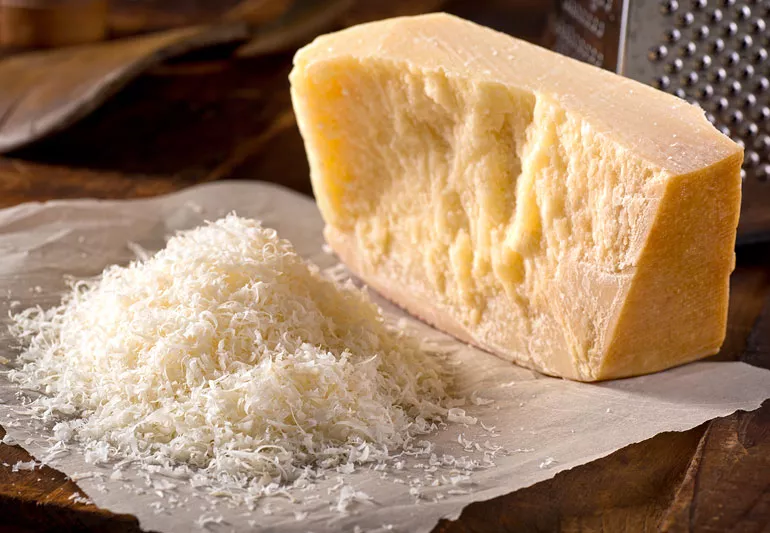See how Chobani and others are boosting dairy aisle sales to $76B with new snacks. Can these trends shape dairy’s future? Learn more.

The dairy aisle has experienced significant growth, reaching $76 billion in annual sales. This surge is driven by innovative snacks like Chobani’s dessert-inspired Greek yogurt and Sargento’s Balanced Breaks. Younger, health-conscious consumers avoid long ingredient lists, and dairy products with clean labels meet this demand. As the trend shifts towards more straightforward, less processed foods, the dairy sector stands out for growth and innovation. Both private labels and major brands are flourishing, highlighting the category’s broad appeal.
Transforming Dairy Consumption: Clean Labels and Consumer Sentiments
| Market Trend | Growth Indicator | Key Statistic |
|---|---|---|
| Clean Label Preference | Increasing | 88% believe dairy aisle likely to contain items fitting lifestyle choices |
| Private Label Sales | Outpacing Premium | Private label outpacing premium brands in 10 out of 15 categories |
| Cheese Consumption | Rising | 46% increase over the last 20 years |
| Yogurt Popularity | Surging | 142% growth in the last quarter-century |
| Butter Demand | Growing | 43% increase over last 25 years |
A discernible shift in consumer preferences has emerged in recent years, challenging the broader trend away from animal-based products. Several compelling factors drive this pivot towards dairy products. Among these, the perception of dairy as a “clean label” option stands out. Younger, health-conscious consumers gravitate towards food products with shorter ingredient lists, effectively shunning overly processed alternatives. Dairy fits this criterion perfectly, promising simplicity and transparency in its composition.
The numerical evidence supporting this shift is striking. For instance, the surge in cheese consumption per capita has doubled over the past two decades, reaching 40 pounds annually in 2022. This indicates a robust and growing appetite for dairy. Similarly, yogurt has seen a remarkable 142% increase in consumption over 25 years, underscoring its resonance with contemporary dietary habits.
The dairy aisle has become a cornerstone for many consumers; recent surveys underscore this trend. An Atomik survey for NFRA revealed that 70% of consumers view the dairy aisle as crucial for their shopping experience, with 88% believing it contains items that fit their lifestyle choices. Tricia Greyshock, EVPCOO at NFRA, highlighted that over half of consumers, approximately 56%, report that dairy products occupy half or more of their refrigerator space.
Such figures reflect not just quantity but also evolving quality and preference. European-style butter, recognized for its higher butterfat content (83%), is gaining traction. This growth in popularity aligns with a broader resurgence of butter, which has seen a 43% increase in per capita consumption over the past quarter-century. The narrative here is straightforward: as consumers become more discerning, they increasingly turn to dairy, appreciating the balance between traditional richness and modern dietary sensibilities.
Clean Label Revolution: Dairy’s Strategic Advantage in a Health-Conscious Market
According to Bill Roberts, CoBank’s senior economist for food and beverage, the current aversion to processed foods and extensive ingredient lists is creating substantial opportunities for the dairy sector. “One of the things we’ve learned from following the plant-based food sector is that long ingredient legends are an obstacle for many younger, health-conscious consumers,” Roberts explained. This trend favors dairy products, which have clean labels with minimal ingredients. By maintaining simplicity in their ingredient lists, dairy brands can attract a growing demographic prioritizing health and transparency in food choices. Roberts emphasized, “Dairy brands can capitalize on that with the right product mix and marketing,” highlighting the strategic importance of clean labels in the evolving food landscape.
Private Label Ascendancy: Taking the Dairy Aisle by Storm
| Dairy Category | Private Label Sales Growth |
|---|---|
| Butter | 15% |
| Cheese | 12% |
| Yogurt | 18% |
| Milk | 20% |
| Ice Cream | 10% |
Private-label dairy products have carved out a niche within the broader market, driven by competitive pricing and evolving consumer preferences. Circana data cited by CoBank underscores this trend, revealing that store-branded items have gained traction and outpacing premium brands in 10 out of 15 dairy categories. This shift highlights the growing consumer trust in private labels, which often deliver comparable quality at a more accessible price point. By leveraging their intrinsic value proposition, private-label dairy products are not merely an alternative but a preferred choice for a substantial market segment.
The Healthy Snacking Megatrend: Dairy’s Strategic Response to Nutrient-Dense Convenience
| Product Type | Attributes | Examples | Market Impact |
|---|---|---|---|
| Low-Fat Cheeses | High in protein Calcium-rich Convenient packaging | Sargento Balanced Breaks Kraft Low-Fat Cheddar | Increased consumer interest in healthy snacking options |
| Specialty Yogurts | Probiotic benefits Various flavors Portable | Chobani Greek Yogurt Siggi’s Icelandic Yogurt | Substantial growth in yogurt category, especially Greek yogurt |
| Functional Dairy Drinks | Added vitamins and minerals High in protein Convenient on-the-go options | Fairlife High-Protein Milk Yakult Probiotic Drink | Emergence of dairy as a functional beverage market |
The healthy snacking megatrend is rooted in escalating consumer demand for nutritious and convenient food options that can be enjoyed on the go. This shift is driven by increasing health and wellness awareness alongside a more fast-paced lifestyle, prioritizing quick yet wholesome eating solutions. Dairy products, inherently rich in essential nutrients such as protein, calcium, and vitamins, are exceptionally positioned to meet these evolving preferences. Their naturally ‘clean label’ appeal, characterized by minimal processing and fewer ingredients, resonates strongly with health-conscious consumers.
Corey Geiger, CoBank’s lead dairy economist, elaborates on the robust opportunity within this space, noting how dairy processors are tapping into the versatility of their products to innovate an array of healthy snack options. From low-fat cheeses to specialty yogurts and functional dairy drinks, the adaptability of dairy ingredients is being leveraged to create a spectrum of conveniently packaged, nutritious snacks. These products cater to the rising demand for healthier snacks and provide the added benefits of satiety and energy, which are crucial for maintaining daily productivity.
The growth of Greek yogurt, which has significantly contributed to the overall increase in yogurt consumption by 142% over the last quarter-century, exemplifies this trend. Its high protein content and probiotic benefits appeal to consumers seeking health and flavor. Similarly, the emergence of portable cheese snacks and drinkable yogurt options further underscores the dairy sector’s strategic alignment with the healthy snacking megatrend. Producers are well-positioned to capture a substantial share of the burgeoning healthy snacks market by continually innovating and emphasizing the health benefits intrinsic to dairy.
A Dairy Renaissance: Cheese and Butter Consumption Reach New Heights
| Category | Growth Over Last 20-25 Years (%) |
|---|---|
| Cheese | 46% |
| Butter | 43% |
| Yogurt | 142% |
Cheese consumption in the U.S. has witnessed a remarkable expansion, with per capita intake doubling over the past two decades and reaching an impressive 40 pounds in 2022. This upswing underscores a sustained increase in demand, driven not only by traditional uses but also by various innovative, snack-oriented products.
In tandem, butter has experienced a resurgence, with per capita consumption rising by a notable 43% over the past 25 years. The renewed interest in butter reflects broader consumer trends favoring natural and minimally processed foods, bolstering its presence in cooking and everyday culinary applications.
Yogurt, perhaps the most dynamic segment, has surged 142% over the last 25 years. A significant driver of this growth has been Greek yogurt, which offers a higher protein content and thicker texture, appealing to health-conscious consumers. Additionally, the proliferation of drinkable yogurt options has further diversified the category, catering to the convenience-driven market seeking quick, on-the-go nutrition.
Innovative Product Launches: Driving Growth and Consumer Engagement in the Dairy Aisle
Innovation has become the cornerstone of growth and consumer engagement in a rapidly evolving dairy landscape. Major dairy brands continuously launch new products catering to modern taste preferences and lifestyle demands. Chobani’s Creations line is a prime example, featuring dessert-inspired Greek yogurt offerings that elevate the traditional yogurt experience with indulgent flavors and textures. Similarly, Sargento has achieved remarkable success with its Balanced Breaks snack products. These portable, nutritious snacks skillfully combine classic dairy elements with nuts, banana chips, Ritz crackers, and Chips Ahoy!, providing a perfect blend of convenience and taste. Such inventive product launches invigorate the dairy aisle and attract a diverse consumer base looking for both traditional and novel snack options.
Future Horizons: Dairy Innovation Set to Scale New Heights
The dairy sector’s innovation pipeline appears robust and poised for dynamic growth. As consumer palates become more adventurous, there is burgeoning potential for products that marry unconventional flavors. One promising avenue is the development of sweet and spicy cheese offerings, melding heat and sweetness into a novel taste experience that could captivate diverse customer segments.
Another significant opportunity lies in leveraging yogurt’s inherent nutritional profile, particularly its protein content. This opens doors for yogurt to become a staple ingredient in traditional formats and as a functional component in myriad food and beverage items. Greek yogurt, in particular, stands as a versatile and nutrient-dense option that can enhance protein content in recipes ranging from smoothies to baked goods.
New brands are at the forefront of this innovation wave. A standout example is ‘Yough,’ which has ingeniously incorporated Greek yogurt as the central ingredient in its frozen pizza products. Their approach offers a staggering 32 grams of protein per pie, showcasing the untapped potential for dairy to reimagine traditional food categories. This blending of nutritional benefits with consumer convenience underscores the forward-thinking initiatives that could define the future of the dairy aisle.
The Bottom Line
The evolving dairy aisle has propelled annual sales to $76 billion. Dairy products thrive in this competitive market as preferences shift towards clean-label, nutrient-dense options. Products like Chobani’s dessert-style Greek yogurt and Sargento’s Balanced Breaks are reshaping consumer expectations. Private-label items surpass premium brands in several categories. Cheese, butter, and yogurt consumption is rising, countering the decline of fluid milk. Innovation opportunities abound, including sweet and spicy cheeses and protein-enriched beverages. The trend towards healthier snacking is a megatrend that dairy can capitalize on for lasting success. The dairy aisle showcases innovation and adaptability, promising continued growth. Staying attuned to trends and preferences is crucial as dairy’s future promises expansion and reinvention.
Key Takeaways:
- Dairy sales have hit a record $76 billion annually, driven by new snackable product launches.
- Companies like Chobani and Sargento are leading the way with innovative offerings, including dessert-inspired Greek yogurt and snackable cheese kits.
- Consumers prefer dairy products for their clean labels and minimal ingredients compared to processed plant-based alternatives.
- Private label dairy items are outperforming premium brands in several categories, showcasing their strong market presence.
- Cheese consumption has surged by 46% over the past 20 years, while yogurt consumption has risen by 142%, primarily due to Greek yogurt’s popularity.
- The dairy sector is capitalizing on the healthy snacking trend with a variety of convenient, nutritious options.
- Future innovations in dairy could include unique flavor combinations and functional ingredients aimed at health-conscious consumers.
- The outlook for retail dairy sales remains robust, with significant growth opportunities on the horizon.
Summary:
The dairy aisle has seen significant growth, reaching $76 billion in annual sales, driven by innovative snacks like Chobani’s dessert-inspired Greek yogurt and Sargento’s Balanced Breaks. Younger, health-conscious consumers are increasingly opting for dairy products with clean labels, as they avoid long ingredient lists and are more discerning about their food choices. Recent surveys show that 70% of consumers view the dairy aisle as crucial for their shopping experience, with 88% believing it contains items that fit their lifestyle choices. Over half of consumers report that dairy products occupy half or more of their refrigerator space. The clean label revolution offers a strategic advantage in dairy products, as it simplifies ingredient lists and caters to a growing demographic prioritizing health and transparency in food choices. Private-label dairy products have carved out a niche within the broader market, driven by competitive pricing and evolving consumer preferences. The healthy snacking megatrend is rooted in escalating consumer demand for nutritious and convenient food options, and dairy products are uniquely positioned to meet these evolving preferences. The dairy sector’s innovation pipeline appears robust and poised for dynamic growth, with new brands like ‘Yough’ incorporating Greek yogurt as the central ingredient in their frozen pizza products.






















